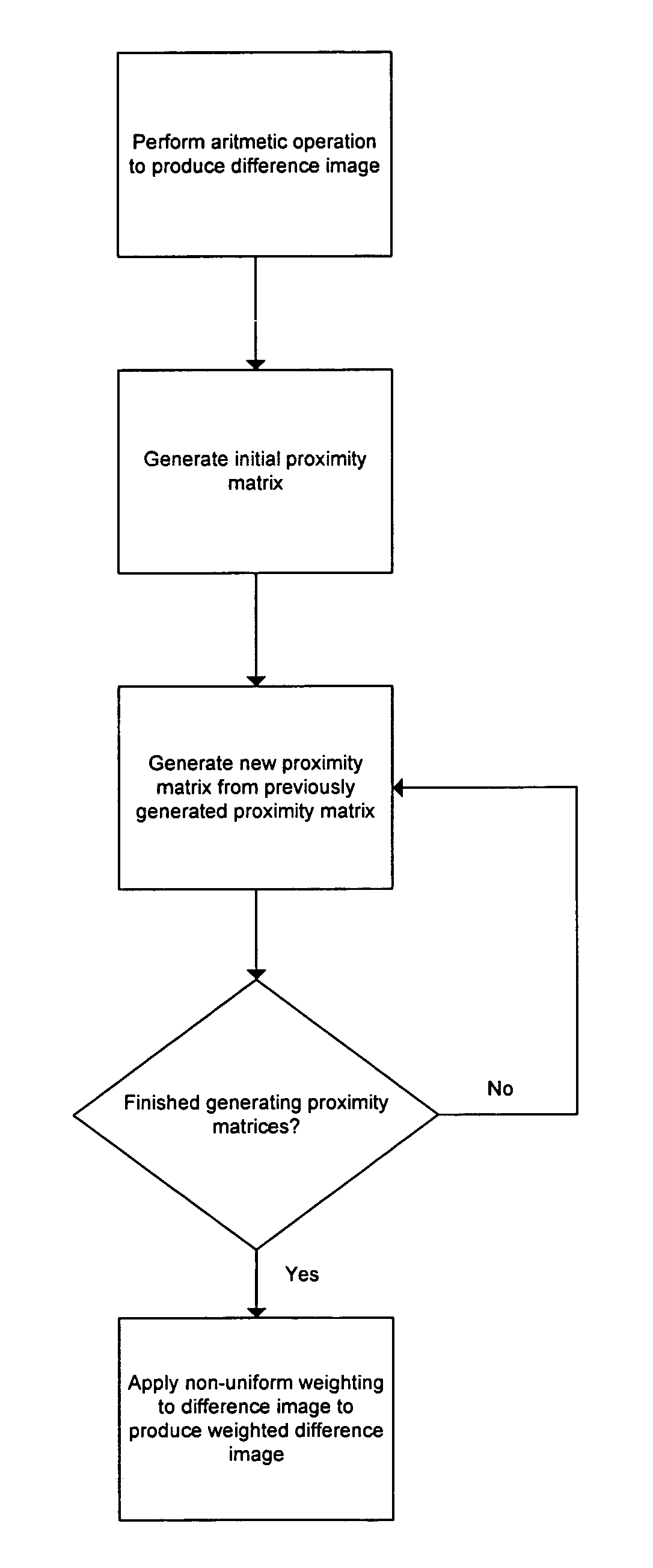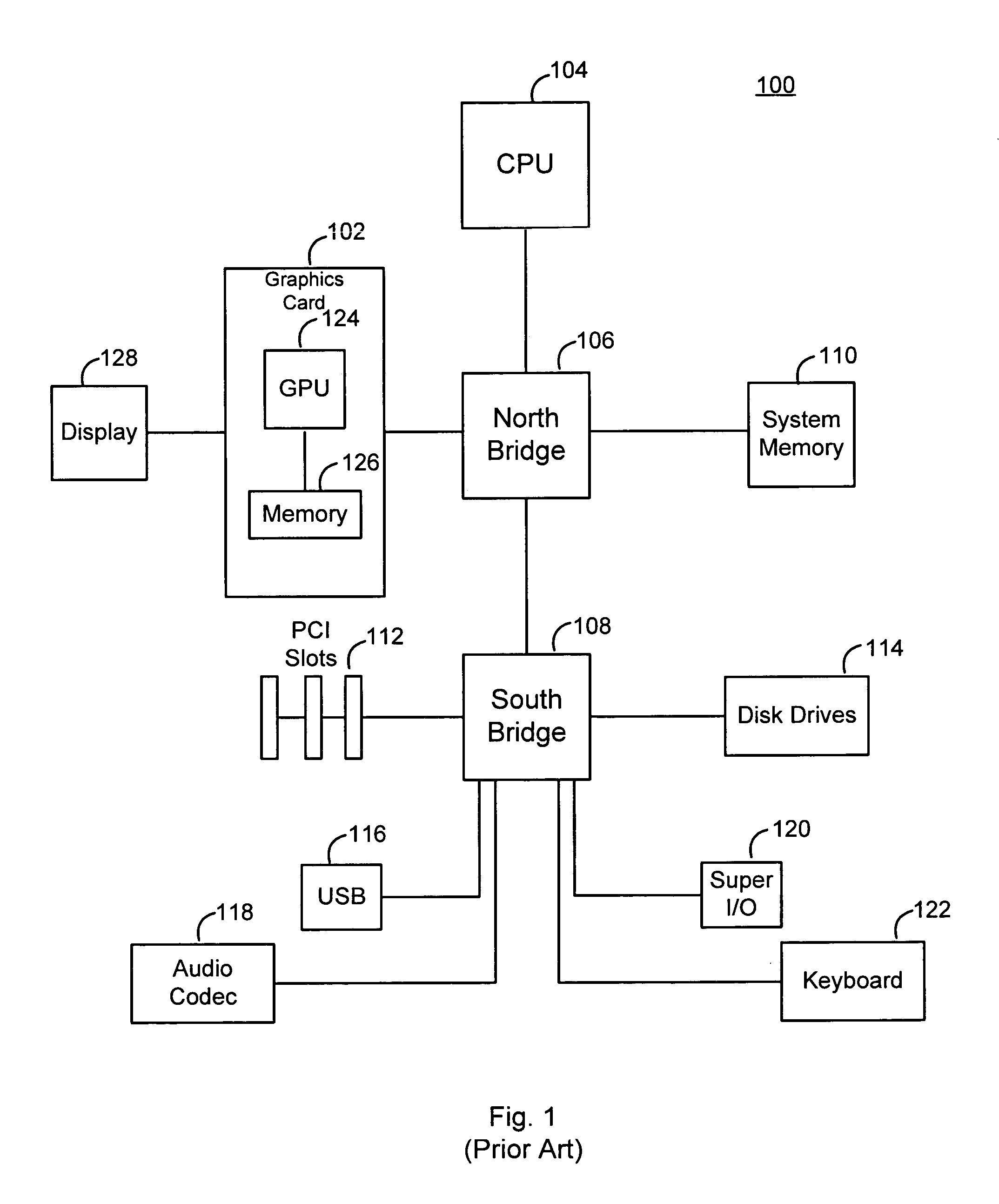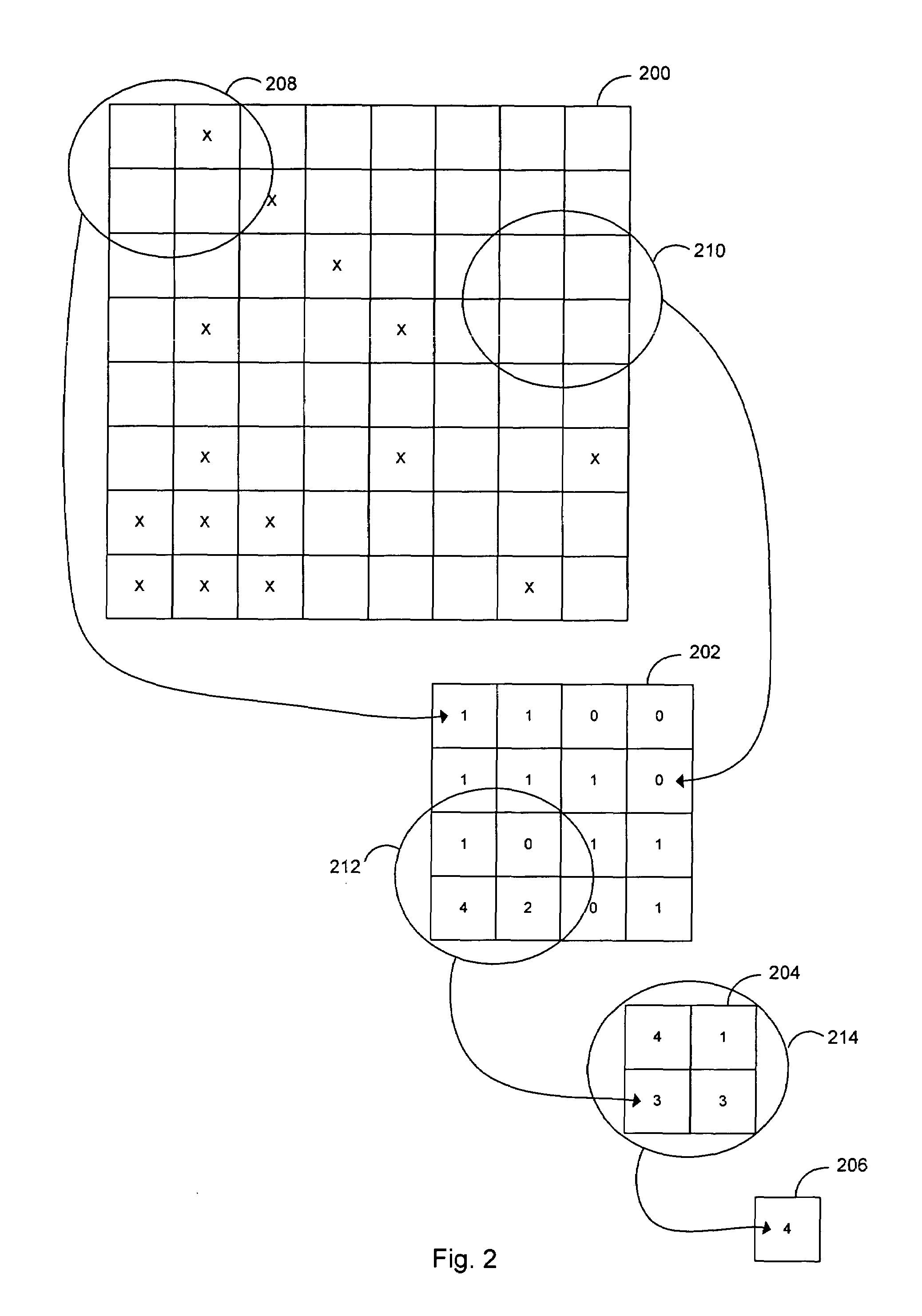Quantifying graphics image difference
a technology of image difference and quantification, applied in the field of quantification of graphics image difference, can solve the problems of insufficiently representing the difference between image 1 and image 2, and the difference image, while easily calculated, may not be adequate, and the traditional technique of computing image difference fails to take into account the perceptual effects that may be related to the locality of image differences to other images. the effect of improving
- Summary
- Abstract
- Description
- Claims
- Application Information
AI Technical Summary
Benefits of technology
Problems solved by technology
Method used
Image
Examples
example application i
Use of Difference Image to Select Anisotropic Filtering Level
[0057]The techniques described above for computing difference between images may be utilized in a wide variety of applications. Some of these applications exist in the field of anisotropic filtering. Previously mentioned U.S. patent application Ser. No. 10 / 936,150, describes anisotropic filtering in further detail, but a brief explanation is also provided below. Anisotropic filtering is a filtering method that is often used to achieve improved texture mapping in graphics processing systems. Texture mapping involves the application of a two-dimensional surface onto a three-dimensional object. This process may be analogized as “wallpapering” or “tiling” the two-dimensional surface onto the three-dimensional object, in order to give the object the appearance of having an outer surface similar to that of the two-dimensional surface. The two-dimensional surface is composed of units commonly referred to as “texels,” and the coll...
example application ii
Use of Difference Image to Tune Fourier-Transform-Based Selection of Anisotropic Filtering Level
[0062]Previously mentioned U.S. patent application Ser. No. 10 / 936,150, also describes techniques for selecting an appropriate level of anisotropic filtering by utilizing a Fourier transform. Such a Fourier-transform-based technique may require significantly less computational resources, in comparison to a technique based on computation of differences between successive anisotropic filtering levels. To select an anisotropic filtering level for an image (which may be a texture bitmap), the image may first be transformed into frequency space representation by taking a Fourier transform, which can be accomplished by using a fast Fourier transform (FFT). Tne level of anisotropic filtering is selected according to an evaluation of where the transformed image is distributed in the frequency space representation. The principles of this technique are based on the recognition that an image that tr...
PUM
 Login to View More
Login to View More Abstract
Description
Claims
Application Information
 Login to View More
Login to View More - R&D
- Intellectual Property
- Life Sciences
- Materials
- Tech Scout
- Unparalleled Data Quality
- Higher Quality Content
- 60% Fewer Hallucinations
Browse by: Latest US Patents, China's latest patents, Technical Efficacy Thesaurus, Application Domain, Technology Topic, Popular Technical Reports.
© 2025 PatSnap. All rights reserved.Legal|Privacy policy|Modern Slavery Act Transparency Statement|Sitemap|About US| Contact US: help@patsnap.com



